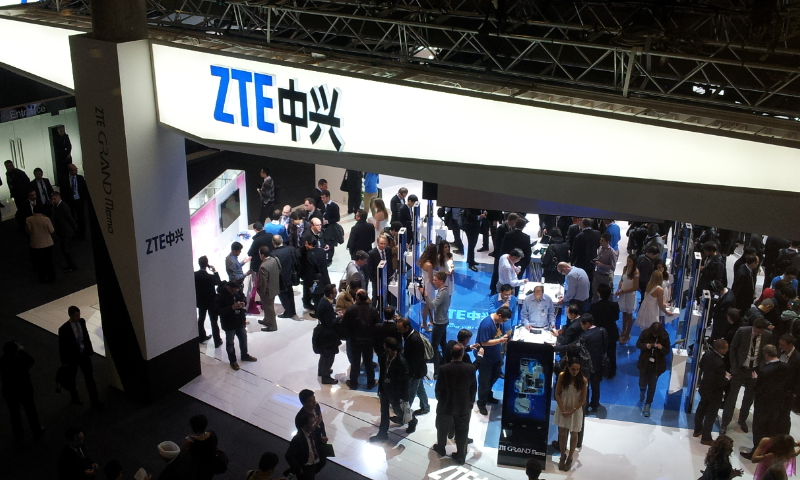
ZTE revealed the world’s first 5G smartphone in Barcelona on Sunday at Mobile World Congress. The phone, which can reach download speeds of up to 1 gigabit per second, is as much as ten times faster than the first generation of 4G services and should be running on widely available 5G mobile internet services by 2020. In the current network, it is three times as powerful at improving data processing capability.
The Gigabit Phone is powered by Qualcomm Snapdragon 835 and integrated with Snapdragon X16LTE. It utilizes carrier aggregation, 4×4 MIMO antenna technology, and 256-QAM modulation to reach previously unheard of download speeds.
“With the new device, the way people stay connected will be changed forever. Focusing on 5G technologies will be one of the key priorities of ZTE's global development,” a ZTE spokesman said. The phone will be able to capture 360° panoramic VR video, instantly store things to the cloud, function better for entertainment purposes, and remove the need for download or installation of applications via instant APP.
These capabilities are incentivizing tech firms to work toward products that are compatible with the network of the future, and South Korean carrier KT Corp hopes to offer 5G service trials during the 2018 Winter Olympics in Pyeongchang. Until then, ZTE’s phone is more representative than functional, and analysts predict it won’t be a big seller, thanks to the lack of availability of both 5G and Virtual Reality. Analysts say this represents a move to announce themselves as a major player in the industry at a time when 5G is all the rage.
ZTE also announced the launch of a 5G IT baseband unit based on Intel architecture at Mobile World Congress. The BBU uses advanced software defined networking/network function virtualization technology and is compatible with 2G/3G/4G/pre5G. It also supports cloud radio access networks, distributed RAN, and 5G central and distributed units.
ZTE is the only Chinese smartphone company seriously dealing in the United States, partnering with 231 carriers across the globe, and made the news recently thanks to the termination of their Kickstarter campaign for the Hawkeye phone, which would have contained features determined by the donors. The phone made well below the goal and was canceled before it began, leaving users without the self-adhering case and eye-tracking technology they’d been promised. For now, though, it is onward and upward.
“Focusing on 5G technologies will be one of the key priorities of ZTE's global development. ZTE will be very glad to leverage its technology strength and experience in 5G to cooperate with government and business partners to discuss and facilitate the upcoming 5G era,” a spokesperson said.
Sources: ZDNET , Phys.org, andBizjournal,
Advertisement
Learn more about Electronic Products Magazine





